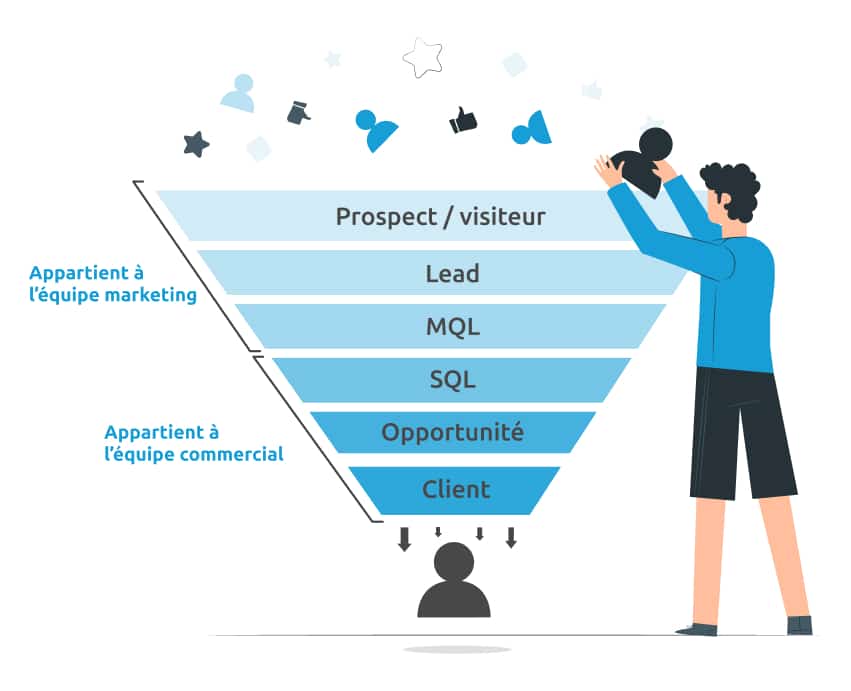Wait a minute! We’re not talking about sports performance here, what we aim for here, you should be able to get without getting your shirt wet! Do I have your attention? Okay, here we go! Sales performance is an inseparable part of your company’s success. Whether you sell a service or a product, selling well is essential. So how do you do it?
Let’s start by taking stock of your current performance and then try to understand how to improve it through various elements.
Sales performance: definition
Sales performance represents the commercial efficiency of your company. If we break down this notion, we talk about performance, which means doing better, achieving a better return, and sales, which includes the act of selling a product or a service. It is therefore about selling better, selling more. Like any performance, it must be calculated and challenged to be improved.
The 6 pillars of sales performance
Performance is based on six key concepts, which we will discuss throughout this article.
First, sales strategy is the most obvious concept. It consists of the methods used to achieve the defined sales objectives. It is closely linked to marketing strategy, the second concept, and corporate strategy, the third key concept. From these strategies comes commercial communication. To achieve all this, it is necessary to have a good sales organization and to ensure efficient sales management.

How to measure sales performance?
To measure it, you need to set up KPIs (Key Performance Indicators). These indicators will allow you to know the current state of your sales performance and to define improvement levers thanks to a few very simple calculations.
#Market share
The market share of a service or product is the ratio of your company’s sales to the total market of the service or product. For example, if you are a sporting goods seller, you might be interested in the market share of your “A bike” in the bike market.
This indication allows you to understand where you stand in relation to your competitors, to identify the leaders, the followers and the specialists.
#Customer loyalty
This is simply the number of customers retained over a given period. To go a little further, you can, for example, calculate the Net Promoter Score (NPS, or the amount of customers ready to recommend your product), the attrition rate (or churn, which is the number of customers lost over a period of time out of the total number of customers, multiplied by 100 of course!) or the repurchase rate (customers who buy from you again).
# Conversion rate
The number of customers you manage to gain over the number of prospects, visitors to your site or your store is an indicator to monitor for your business.
#Average basket value
Your average cart value is important as it allows you to predict the number of sales you need to make to reach your revenue objectives. For example, an average basket that increases thanks to upsell or cross sell can compensate for a lower number of new customers over a given period.
How to improve sales performance?
Your company’s sales strategy is defined, your KPIs are in place and your objectives are set. Congratulations, this is a good start. All that’s left is to implement the different levers that will allow you to improve your performance to reach, or exceed, your objectives.
Smarketing
We’ve mentioned it before, but if you missed it, here’s a quick recap.
Smarketing is the collaboration between salespeople and marketers. I promise, it sounds scary but it’s not. The goal is to bring the two teams closer together, by working on common objectives. This allows for more regular feedback and therefore a better adaptation of processes.

Personalize the sales experience
The sales experience is increasingly important. If it is similar to marketing, it is the work of the sales team in its own right. Personalize the relationship, using data collected from the beginning of the marketing relationship (with marketing automation, for example) and sales, in your CRM in particular. All this information allows you to provide the right content at the right time in a personalized way.
Diversify your leads
Another lever to improve your sales performance is to diversify your lead sources. Marketing may bring you part of the leads, especially thanks to inbound marketing techniques.
Social selling also allows you to find your leads. For this, do not neglect your personal reputation: customers buy from you, before buying the brand and the product.
Then, you can, in collaboration with marketing, think about co-marketing. Indeed, if you have the same target as another brand and your products are complementary, work together! It is much more efficient than buying contact databases, with the advantage of having a clean, opt-in base (you probably heard about “GDPR”) and to which you have been recommended.
Beyond the objectives set by your commercial strategy, more operational actions and objectives can be interesting: number of LinkedIn posts, recall a lost base, etc. So, what are the sales performance levers you will develop in the near future?





